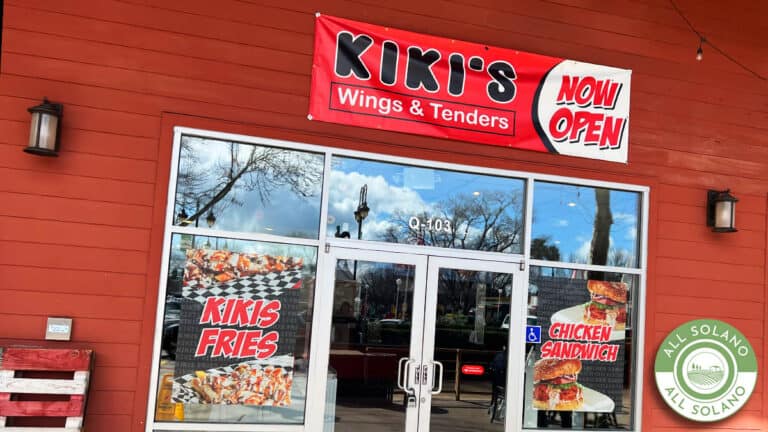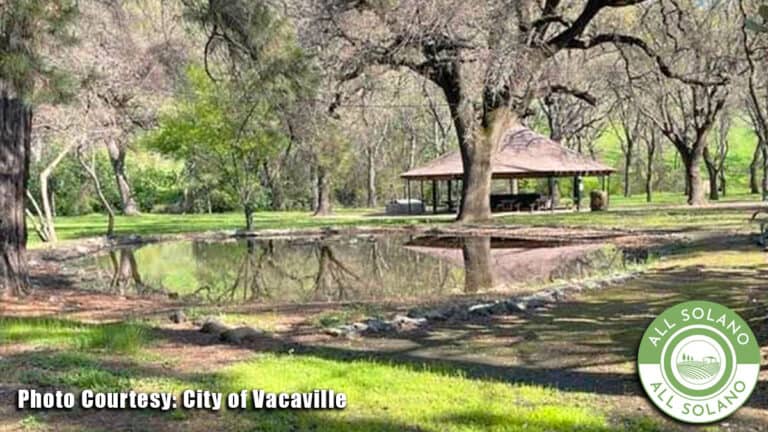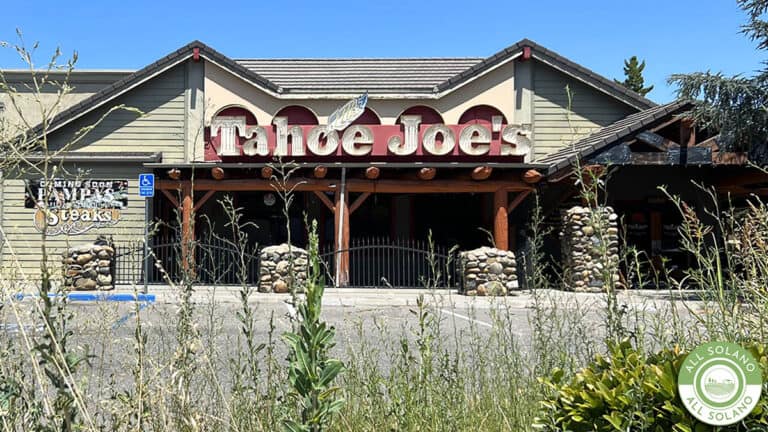Vacaville: History of the Nut Tree
A modern visitor to Vacaville may know the Nut Tree as a shopping center. But the Nut Tree’s history spans over 150 years. What began as a fruit orchard, became a popular tourist attraction, iconic restaurant and so much more. Here’s everything you need to know about Nut Tree history in Vacaville.
You’ll notice many of Vacaville’s major roadways are named after individuals and families related to the Nut Tree.
The Very Beginning
During the California Gold Rush, Josiah Allison came west to find gold and fell in love with California’s beauty, climate, and bountiful soil. Josiah Allison returned to Iowa and, in the Spring of 1855, he moved his family to the area known as “Vacaville.” He settled on what was later known as the Nut Tree Ranch and began planting fruit trees.
Between 1858 and 1859, Josiah Allison’s niece, Sallie Fox, was among a group who traveled west to California on the L.J. Rose wagon train. The journey was plagued with problems. During an attack by the Mojave Tribe, Sallie was seriously injured by an arrow strike. Her father was killed in the attack. During the trip, Sallie Fox collected black walnuts in Arizona and brought them with her to California.
In 1860, Josiah Allison planted one of Sallie Fox’s walnuts and it eventually grew into a large black walnut tree. It provided much-needed shade on the ranch during summer and became an iconic element of the ranch. The ranch was later named “Nut Tree Ranch” because of how prominent the walnut tree was.

The fruit ranch started by Josiah Allison continued for two generations while Vacaville hit a growth spurt in the 1880s because of an influx of prospective farmers and land speculators. Railroads were built through Vacaville and Elmira. Prominent families, including the Buck Family, moved to Vacaville to take advantage of its fruit-growing potential, given its fertile soil and climate.
In 1906, a family home was built on the site of the Nut Tree by Josiah Allison’s daughter, Hester, and her husband, Luther J. Harbison. It still stands today and is known as “The Harbison House,” which now serves as a museum of Nut Tree history.
In 1920, the third generation of the Allison family assumed management of the Nut Tree Ranch.
The Fruit Stand & Restaurant
In 1921, a heat wave caused all the figs grown on the Nut Tree Ranch to ripen at once. Josiah Allison’s granddaughter, Helen Harbison, and her husband, Edwin “Bunny” Power, set up a roadside fruit stand to offload the excess figs. In the shade of Sallie Fox’s large walnut tree, they put up a sign naming the fruit stand, “The Nut Tree.”
The fruit stand was popular among early customers, so Helen and Edwin Power expanded the following season.
They built a permanent restaurant structure and curated a “California cuisine” menu. In 1922, the Powers packaged candied fruit and marketed it as “California Fruit Confection.” The candy became very popular and the Powers sold it nationwide. Sales of the glazed fruit expanded and required the building of a fruit-packing facility adjacent to the Southern-Pacific railroad tracks.
By the mid-1930’s, the California fruit industry was struggling. Despite this, The Nut Tree became an established western institution and “must-see” when traveling through Northern California. Famous guests of the time included Herbert Hoover and Will Rogers.
Nut Tree Expansion Between the 1950s & 1970s
Following World War II, a fourth generation of the Josiah Allison family entered the family business. In 1952, the family added a toy shop and a small railroad which toured the property. In 1955, the railroad was extended to meet travelers arriving at the newly constructed Nut Tree Airport.
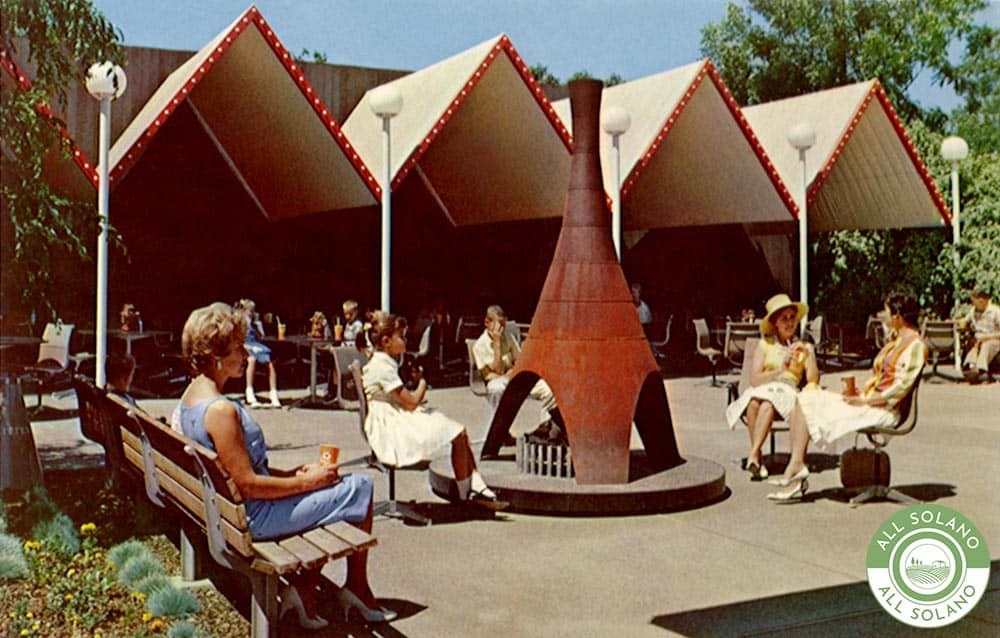
Sadly, the great tree which grew from Sallie Fox’s walnut required removal due to age in 1952. A walnut was planted in its place by Josiah Allison’s great-great-granddaughter.
In 1958, a larger and more modern dining room was constructed based on plans from the Sacramento architectural firm Dreyfuss & Blackford. The spacious restaurant featured open atriums and a gift shop. Custom-designed chairs and tables added to the restaurant’s unique style. The Nut Tree’s design was cutting-edge for the time.
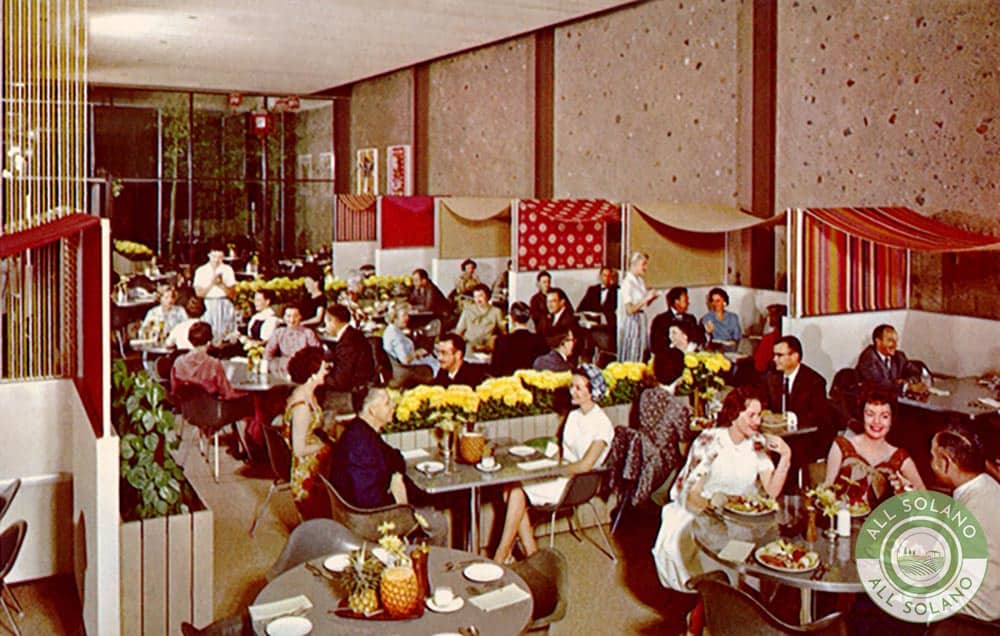
In 1962, the United States Postal Service designated the area as “Nut Tree, California.” U.S. Highway 40 became Interstate 80 in 1964 and expanded to twelve lanes of traffic connecting Sacramento and San Francisco.
The parent company of The Nut Tree was named “The Nut Tree Partners” and opened a coffee shop called “The Coffee Tree” on the south (opposite) side of I-80 in 1965.
For its fiftieth year in 1970, Nut Tree added a new bakery shop, additional facilities for customers and employees and a large merchandise area which sold unique products, both from The Nut Tree and worldwide.
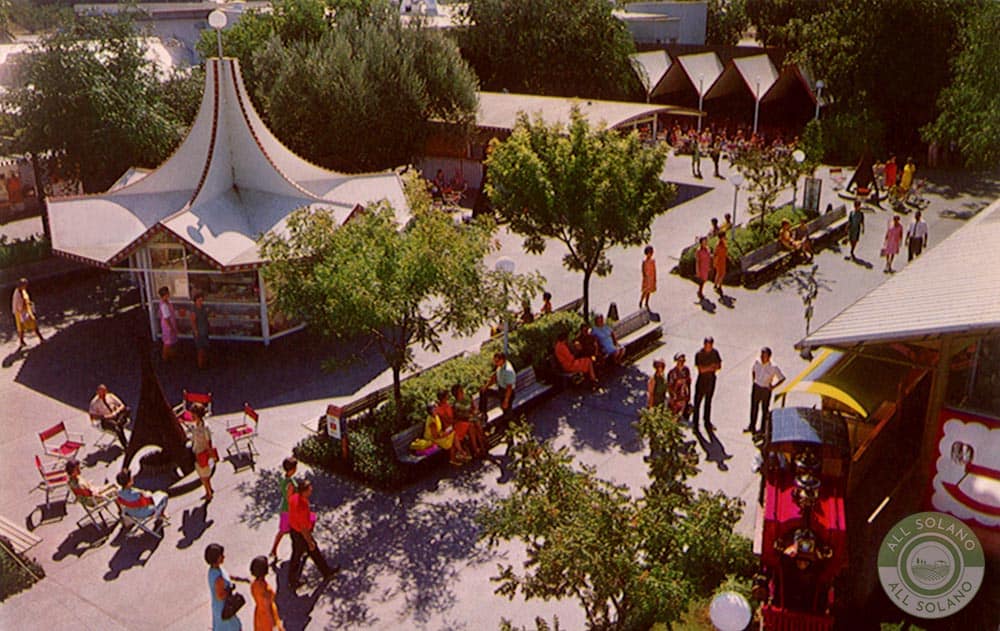
Downfall in the 1990s
I can personally attest that the Nut Tree was a popular spot in the 1990s. I recall going to breakfast there after church almost every Sunday. I rode the train, the rocking horses, and I couldn’t leave without visiting the toy store.
But it appears trouble was brewing among the Powers Family, who still owned the Nut Tree. An article in the SF Gate outlines the legal issues and challenges which arose internally within the Power family business.
According to SF Gate, ownership was split between the surviving Power Children and Robert Powers’ widow, Margaret.
In 1994, Margaret Power filed a lawsuit alleging her in-laws had lost over five million dollars in the past seven years. The case continued in court for about two years and the final terms of the suit were not disclosed. But around the same time, the Nut Tree property went on the market for sale. A potential buyer named Bill Poland promised to turn the site into a theme park, but his offer fell through.
The Coffee Tree remained in operation until 2003 when it closed abruptly. It was demolished in 2005 and an Olive Garden was built in its place (it’s still there).
The Baseball Stadium
In 2000, the Sacramento Steelheads found a new home in Vacaville and became the “Solano Steelheads.” A rudimentary baseball stadium was erected on the former Nut Tree property in Vacaville. The stadium was named “Travis Credit Union Park” (T-CUP) for its corporate sponsor, Travis Credit Union.
The Solano Steelheads were an independent, professional baseball team and part of the Western Baseball League. At the end of the 2002 season, the Steelheads and the rest of the Western Baseball League collapsed financially. The future of baseball in Vacaville was dubious.
The stadium was purchased by local businessmen Curtis and Bryant Stocking, who created a wooden bat baseball team called the Solano Thunderbirds. A concession stand and additional seating were added to the stadium. The Thunderbirds played until 2007 but the economics of keeping the baseball team in town didn’t pan out.
The stadium closed in 2007. It was dismantled and most of it was shipped to Redding, CA and became part of Tiger Field.
While Travis Credit Union Park was open, many concerts, local events, graduations and fireworks shows were held at the facility.

The Nut Tree Today
In 2009, The Nut Tree Plaza shopping center was built on the site of the old Nut Tree restaurant. It remains a vibrant shopping center adjacent to I-80. Nods to the former Nut Tree remain. There are historical pictures of the Nut Tree throughout the center. Children rides, including a train and rocking horses modeled after those at the Nut Tree remain.

If you are like us and are a fan of Vacaville’s history, have a look around our site. We are third generation locals and love Vacaville! Bookmark the site and follow us on social media!



